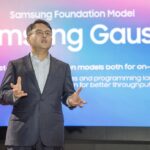Introduction
In today’s rapidly evolving world, the term ‘Generative AI’ is on everyone’s lips. Studies reveal that Generative AI is becoming indispensable in the workplace, with the market projected to reach $1.3 trillion by 2032. If you’ve been considering a career transition from a non-tech field to Generative AI, now is the time! This article explores the applications, growth, and impact of Generative AI, offering insights on how to transition from a non-tech career to becoming part of this global transformation.
Importance of Transitioning to a Tech-Focused Career
- In todays digital era, acquiring technological skills is now essential for career success and is no longer optional.
- The technology industry is expanding at an impressive rate; employment in this field is expected to grow by 13% between 2020 and 2030, above the average growth of other vocations.
- Making the move to a tech focused position is quite promising, especially in the field of generative AI.
- Participating in generative AI places people at the forefront of creativity and allows them to directly influence the development of new technologies.
- According to recent industry polls, AI specialists earn wages well above the national average, making jobs in AI and machine learning among the top paying.
- Professional success now requires the capacity to collaborate with intelligent systems and algorithms, as it provides resistance against automation and obsolescence in a changing environment.
Why Python is the Preferred Choice?
To kickstart and transition your journey in generative AI, the first step is learning a programming language. This tool is essential as it will be the medium through which you will instruct and interact with computers. While several languages can be used, some of the most preferred for data science and generative AI include Python, R, and Julia.
Python is a popular choice due to its simplicity, readability, and extensive ecosystem of libraries and frameworks like TensorFlow, NumPy, and PyTorch. These are crucial for AI and machine learning projects. Its community support and extensive resources provide guidance and solutions throughout the learning journey.
You can enroll in our free python course to learn more about python.
Understanding the Fundamentals of Statistics
A solid grasp of statistics is crucial to effectively model and interpret the data that feeds into AI algorithms. Following are the key concepts of statistics that you need to learn to transition from non-tech to GenAI career:
- Variables in statistics represent different data types, such as nominal, ordinal, interval, and ratio, which are crucial for determining the type of analysis to perform.
- Distributions, such as normal distributions, help predict outcomes and make decisions by distributing observations across a range of values. It is a crucial aspect in AI for predicting model behaviors.
- Aggregate functions, such as mean, median, mode, and standard deviation. They are statistical measures that summarize large datasets into a single value, aiding in data analysis. It also provides insights from complex datasets, and ensuring model accuracy and reliability.
Storytelling with Data
Data storytelling is a crucial skill for those who want to transitioning into generative AI or any data-driven field. It involves combining narrative elements with data insights to create compelling, understandable, and engaging narratives. With a strong foundation in statistics, one can effectively integrate these insights into narratives that resonate with their audience, enhancing their data storytelling capabilities.
Techniques for Effective Communication with Data
- Context is Key: Always start with the context. Before diving into the data, explain why this data is important. What does it represent? Who does it impact? Establishing relevance early makes your audience more engaged.
- Visual Simplicity: Utilize clear, concise visuals like graphs, charts, and charts to convey your story, avoiding clutter and focusing on essential details, using tools like Excel or Matplotlib.
- Narrative Structure: Create a data story by starting with a premise, presenting the data in a meaningful sequence, and concluding with insights or action calls to action, similar to a traditional narrative.
- Highlight Key Points: Highlight key data points with annotations, highlights, or visual changes, ensuring easy comprehension and understanding for your audience.
Foundations of Machine Learning
Machine learning is the engine behind smarter technology like voice assistants and website recommendation systems. It helps computers learn and make decisions based on the information they gather, making it a key part of generative AI and enabling computers to tell stories using data.
The ML algorithms leverage patterns learned from vast amounts of data to create new, original content. Understanding the principles of machine learning is fundamental for anyone aiming to work within this innovative area, as it forms the backbone of how generative models operate and evolve.
Exploring Machine Learning Algorithms
It’s crucial to understand various machine learning algorithms, including supervised and unsupervised learning for transitioning to a generative AI scientist,
- Supervised Learning: Supervised learning is a method where a model is trained on a labeled dataset, where each example is paired with a label, with the goal of learning to predict the label from the input data’s features.
- Regression Algorithms: Used to predict continuous responses, regression techniques are vital for forecasting numerical outcomes based on previous data. For instance, predicting real estate prices from various property features utilizes regression analysis.
- Classification Algorithms: These algorithms are used to predict discrete responses, labeling inputs into categories. An example is classifying emails into “spam” or “not spam,” which helps in filtering unwanted messages.
- Unsupervised Learning: These algorithms are used when data categorization or labeling is unknown. It helps in identifying hidden patterns or data clusters without human intervention. Techniques like clustering and association algorithms help segment datasets into similar groups or identify associations between variables within a dataset.
Each category of machine learning algorithms provides a foundational skill set necessary for tackling more complex problems in AI. Aspiring AI scientists should start with these basic algorithms to build a solid understanding before progressing to more advanced generative AI applications. This foundational knowledge is not only crucial for working with generative models like GPT or DALL-E but is also instrumental in effectively applying AI across various domains.
Working with Unstructured Data
Machine learning faces the challenge of unstructured data, which includes text, images, audio, and video, unlike structured data. Mastering to manipulate and extract meaningful information from unstructured data is crucial for AI advancement.
Introduction to Deep Learning
Deep learning is a subset of machine learning. It is adept at processing and learning from unstructured data using artificial neural networks with multiple layers, achieving remarkable accuracy in tasks like image and speech recognition.
Key Areas: Computer Vision and NLP
- Computer Vision: This field enables machines to interpret and understand the visual world through techniques like object detection, image segmentation, and image generation. It forms the basis for applications like autonomous vehicles and facial recognition systems.
- Natural Language Processing (NLP): NLP is a crucial skill for creating effective applications that engage and assist users by facilitating language interaction between computers and humans. This also includes text translation, sentiment analysis, and chatbot development.
Exploring Transformers and Their Applications
Transformers, renowned for their ability to manage data sequences, have revolutionized computer language comprehension and production, serving as the foundation for numerous advanced natural language processing models.
Understanding Large Language Models (LLMs) and Diffusion Models
Moving forward, we arrive at a crucial juncture: understanding Large Language Models (LLMs) and Diffusion Models. These models are gaining traction in the AI landscape, emphasizing their importance in generative AI. Are you prepared to explore this pivotal aspect?”
- Large Language Models: These models, such as GPT, are trained on vast datasets to generate coherent and contextually relevant text based on input cues. They are pivotal in applications ranging from automated content creation to conversation systems.
- Diffusion Models: A newer class of generative models that progressively learn to create data resembling the training set. They have been notably successful in generating high-quality images.

Building Generative AI Applications
it’s time to dive into building some actual generative AI applications. Think of it like putting your newfound skills into action. For instance, you might want to try your hand at creating a text generation tool or perhaps an image synthesis application. These hands-on projects are crucial because they help solidify your understanding and give you practical experience. Plus, they’re a lot of fun to work on!”
Tools and Platforms for Development: RAG, LangChain
Building generative AI applications involves leveraging various tools and platforms for development. Two notable examples include Retrieval-Augmented Generation (RAG) and LangChain. RAG combines retrieval and generation techniques to enhance user experience, as seen in applications like news apps that fetch relevant data and generate informative articles on current events. On the other hand, LangChain simplifies application development by providing a platform for utilizing language models, such as AI-powered writing assistants aiding users in composing professional emails or creative stories.

Additionally, prompt engineering plays a crucial role in guiding AI models toward desired outputs. For instance, in a text summarization tool, prompt engineering ensures concise and tailored summaries, enhancing the tool’s effectiveness. These tools, along with prompt engineering, contribute significantly to the development of diverse generative AI applications, catering to various needs and scenarios.
Educational Resources and Learning Paths
Transitioning into a generative AI career involves continuous learning, starting with foundational courses in Python, statistics, and machine learning, and advancing to specialized courses in deep learning and NLP, with online platforms like Analytics Vidhya offering tailored courses.
The GenAI Pinnacle Program offered by Analytics Vidhya is a comprehensive course designed to equip learners with in-depth knowledge and skills in generative AI. This program offers a structured learning path, covering fundamental concepts to advanced applications, allowing participants to master the latest techniques in this rapidly evolving field.
Building a Portfolio and Gaining Practical Experience
Practical experience is essential. Take on tasks that showcase your proficiency in utilizing AI principles. Creating a chatbot, a computer vision application, or testing with the newest generative models are just a few of the projects that expand your portfolio and make you more marketable in the AI sector. By following these steps and exploring the latest advancements and tools in AI, you can successfully transition from a non-tech background into a thriving career in generative AI.
Conclusion
Career transition to generative AI from a non-technical background offers growth and innovation opportunities. Gaining expertise in machine learning, data storytelling, and programming positions you at the forefront of this evolving industry. Continuous learning and real-world application prepare you for challenging tasks and contributing to technological breakthroughs. Approaching this path with interest and commitment will position you well to succeed in the fascinating field of generative artificial intelligence. This article guided you on how you can transition from yourself from non tech to genAI.
You can read our more career articles here.
By Analytics Vidhya, April 27, 2024.












